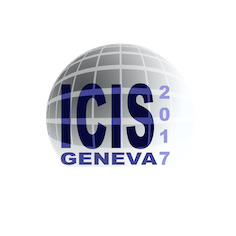Speaker
Description
Reducing the size, weight and power (SWAP) of ion accelerators is one of the driving forces in developing new accelerators for applications in research and industry. We recently demonstrated a novel multi-beamlet ion accelerator [1] formed from stacks of wafers (PC board in the first demonstrations) and fabricated using microfabrication approaches. The concept of this microelectron-
mechanical-system (MEMS)-based RF structure is based on the earlier work of by Maschke [2] on the Multiple Electrostatic Quadrupole Array Linear Accelerators (MEQALAC). Alternating gradient quadrupoles are placed between acceleration units to form the accelerator. An initial matching unit consisting of six electrostatic quadrupoles (ESQ), manufactured by 3D-printing, is used to tune the beam envelope parameters including the effect of space charge and emittance before injecting the ions into the RF structure. The ions are then accelerated in subsequent RF gaps, powered by a high-Q, on-chip LC circuit. More ESQs are inserted between RF units to focus the beam transversely along the beam line.
In the proof-of-principle experiment, a filament-discharge multi-cusp ion source [3] with a 3×3 array of extraction apertures was used to generate the injected ion beams, e.g. $\text{Ar}^+$, $\text{He}^+$ or $\text{H}^+$. The inner diameter of the ion source chamber is 7.5 cm. With fourteen permanent cusp magnets along the chamber wall, the uniform plasma region is approximately 3 cm in diameter. The total deliverable current can be easily scaled up by increasing the number of beamlets extracted from a larger uniform plasma area. For example, to achieve 300 mA total beam current, considering beamlet fill factor of ~10% packing density (e.g. 1 mm diameter aperture with a pitch size of 3 mm), the ion source needs to be capable of producing ion current density at 100 mA/$\text{cm}^2$ across an area of 6 cm in diameter. This is certainly within reach of present ion sources, for example, filament-driven, RF-driven ion source.
Acknowledgement
This work was supported by the Office of Science of the US Department of Energy through the ARPA0-e ALPHA program under contracts DE-AC02–05CH11231 (LBNL).
References
[1] A. Persaud, et. al, “Ion acceleration in a scalable MEMS RF-structure for a compact linear accelerator”, https://arxiv.org/abs/1610.09723
[2] A. Maschke, “Space-charge limits for linear accelerators," Tech. Rep. BNL-51022 (Brookhaven National Lab., 1979).
[3] Q. Ji et. al, “Development and testing of a pulsed helium ion source for probing materials and warm dense matter studies”, Review of Sci. Instrum. 87, 02B707 (2016).
- This work was supported by the Office of Science of the US Department of Energy through the ARPA0-e ALPHA program under contracts DE-AC02–05CH11231 (LBNL).




